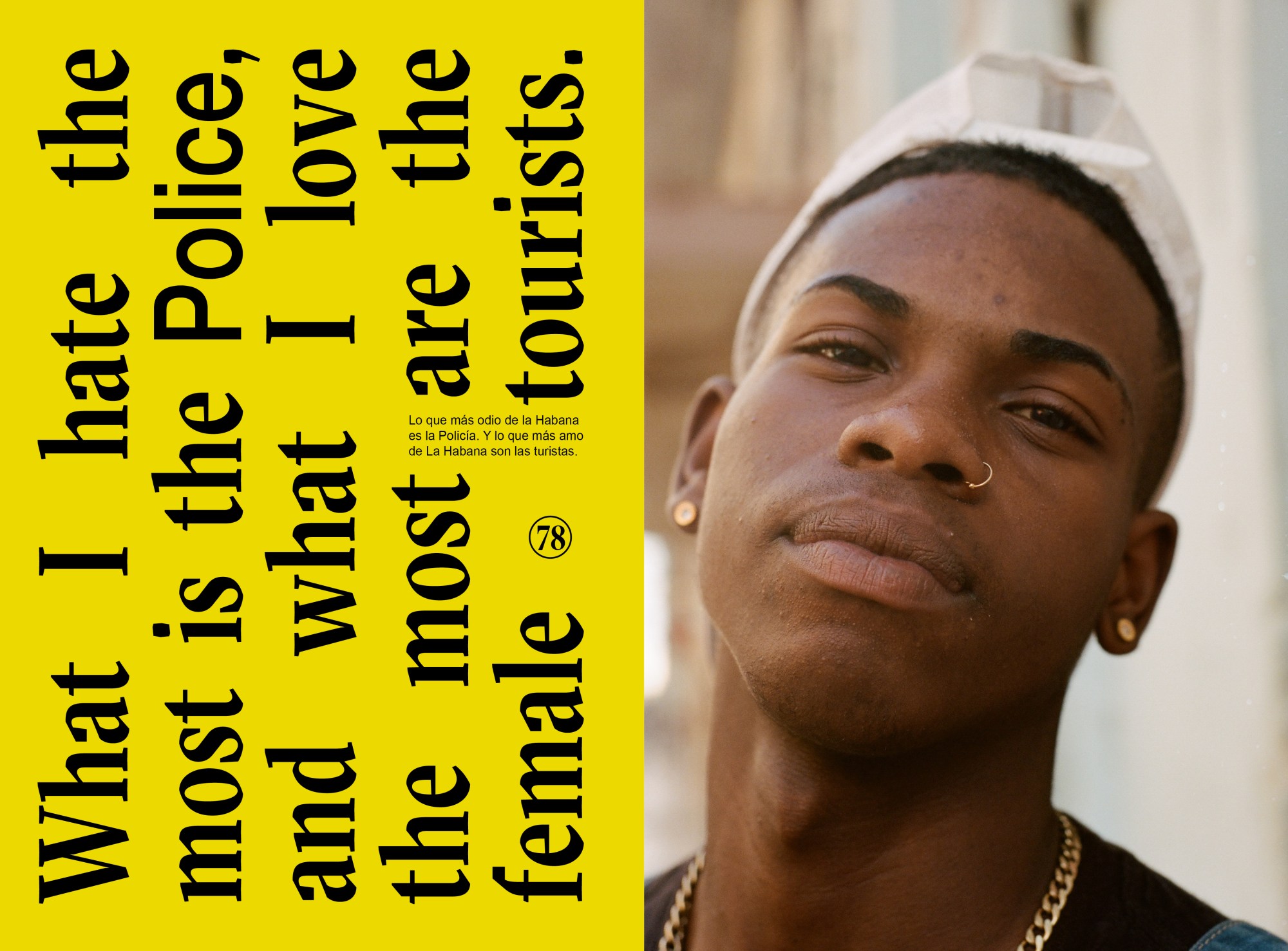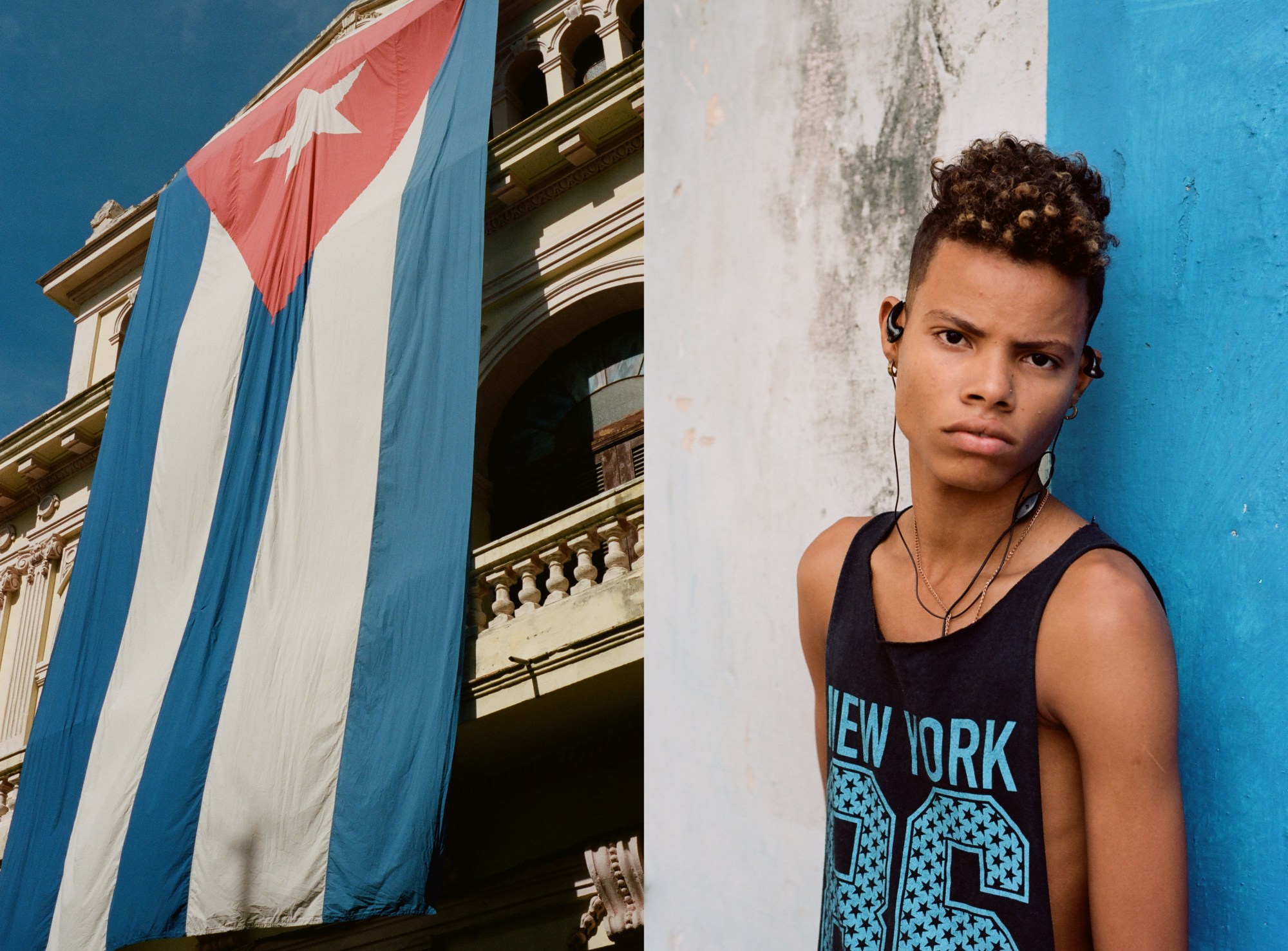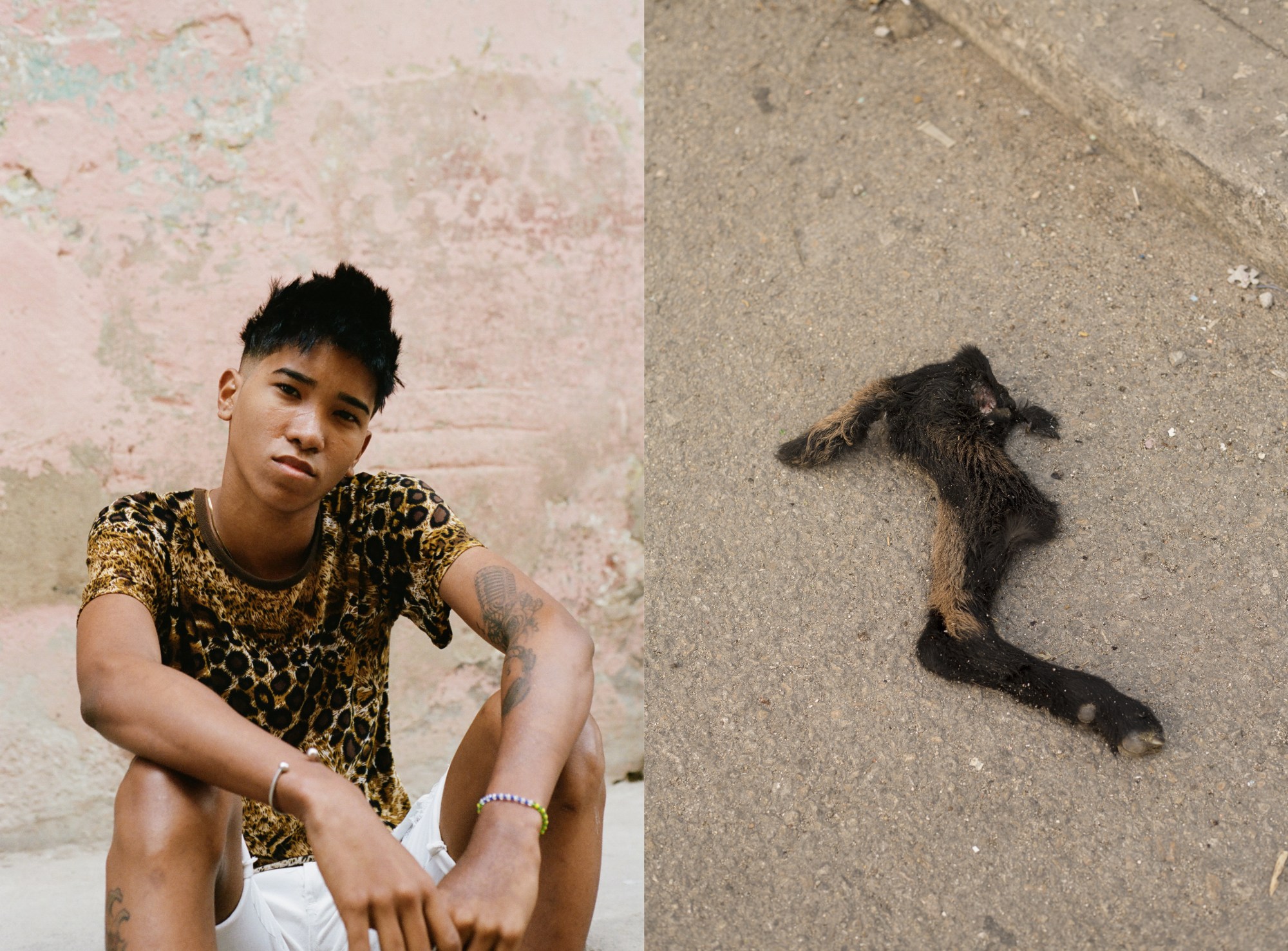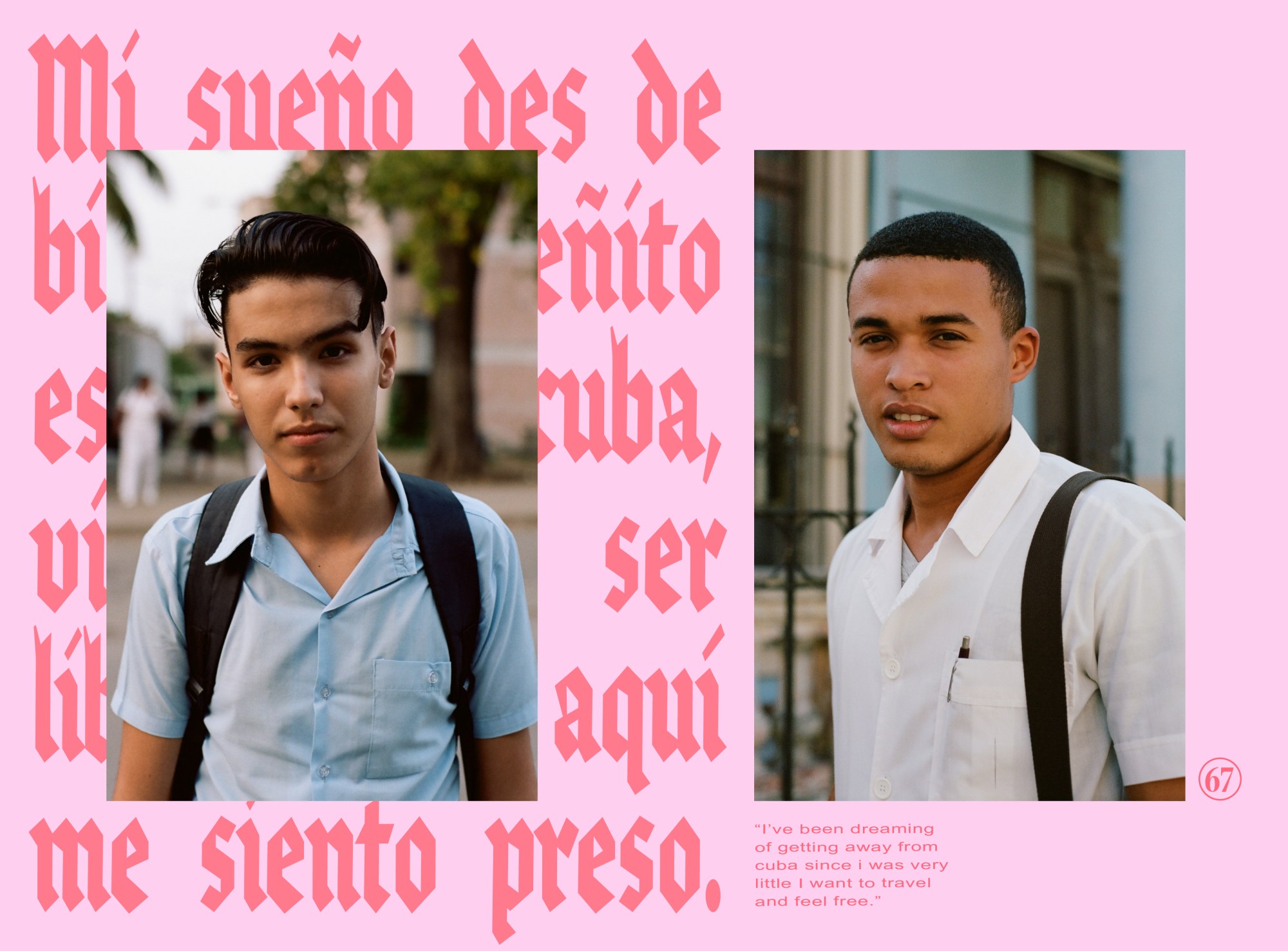Capturing the various smiles of Cuban men, Joshua Osborne‘s Habanaboy is a photographic exploration of the various forms of masculinity: bold, natural and unrelenting.
Visiting the Caribbean island, the photographer was quickly hit with inspiration. “I made friends with two boys and they became a huge part of the project,” he says. “They walked around the city of Havana with me and if I saw a boy they would approach him and help me with translation etc. I felt it gave me a special type of access that other tourists wouldn’t necessarily get. I had the freedom to shoot without question”.
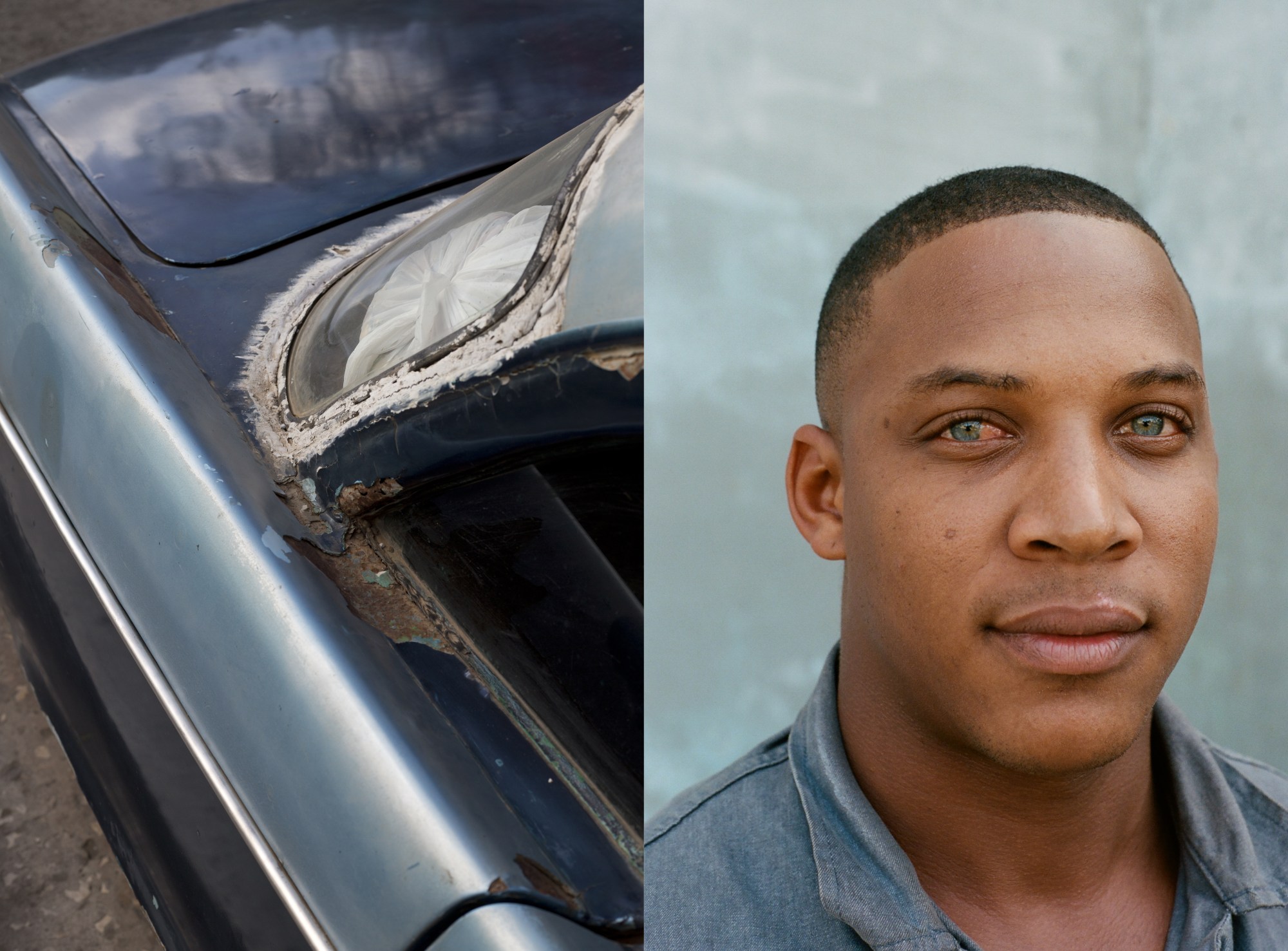
Rather than shooting anyone that caught his eye, Joshua found direction in the different underground scenes that are homed in the city. From Reggaeton boys with fresh fades and lines in their hair, who listen to Daddy Yankee and chase Cuban girls around town – to “Miki” boys who are into European music and fashion (and tourist girls), to Havana’s growing skate community. He also spent some time with the drag community, “it was really insightful,” he says. “They were strong and beautiful people but it was evident that they didn’t have much to work with in terms of make-up etc. They killed it regardless and although we couldn’t communicate vocally, it was a great scene to be a part of if only for a day or two.”
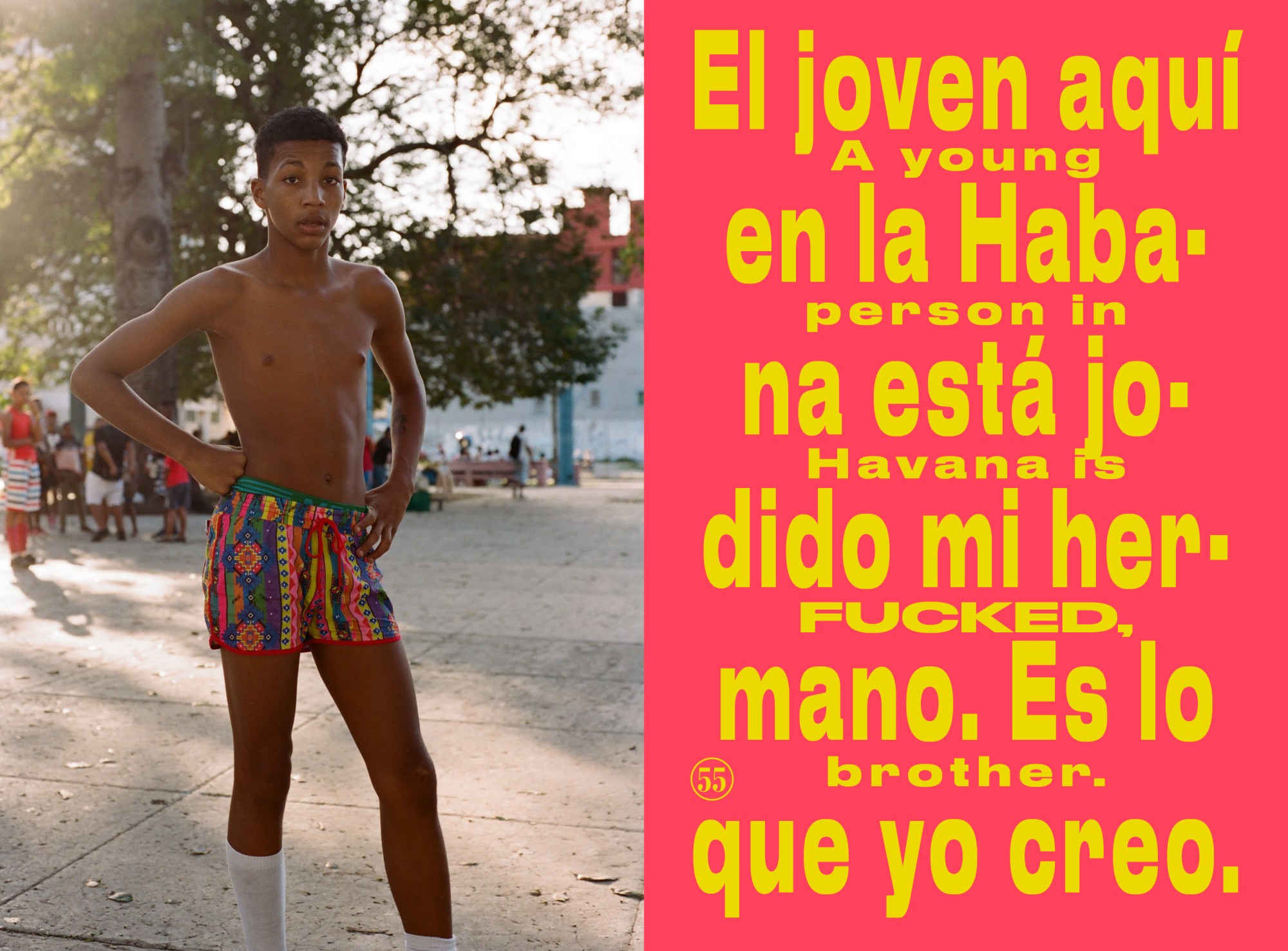
Tackling the subject of modern masculinity, the zine celebrates the confidence of Cuban boys by observing their approach to the opposite sex. “They literally didn’t give a shit when it came to having their portrait taken,” he says. “It wasn’t an inconvenience, it wasn’t something that excited them or shocked them. I think Western culture we’ve become conditioned to being image conscious and I’ve had experiences with shooting British boys where it has become very unnatural. I believe it’s down to vanity and awareness of where the images could end up.”
Known for his portraits of men in everyday situations, Joshua’s take on modern masculinity is that it is being “open minded enough to adapt to change. Learning to love yourself without fear of being judged or categorised.” Drawing from social realism, his portraits are raw and authentic. “I try to put myself in certain situations where I’m surrounded by those types of people and I love the idea that I’m able to adjust that approach to wherever I am at the time.”
